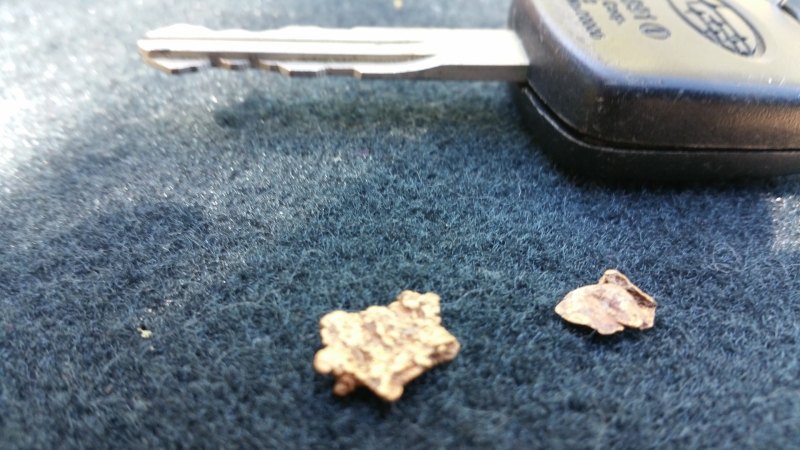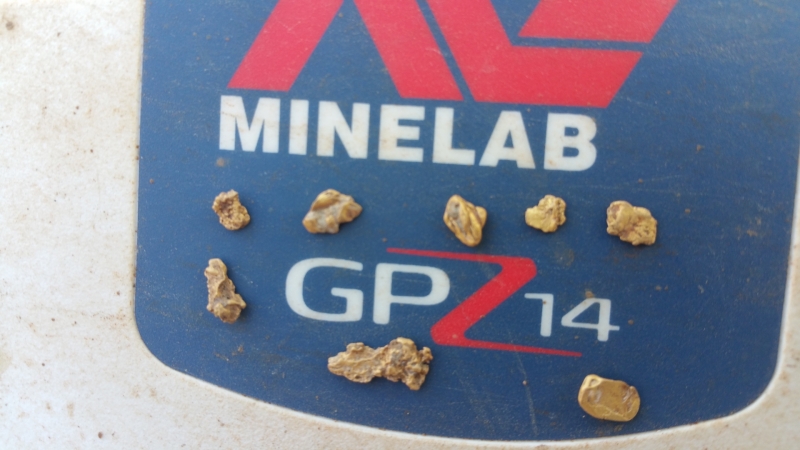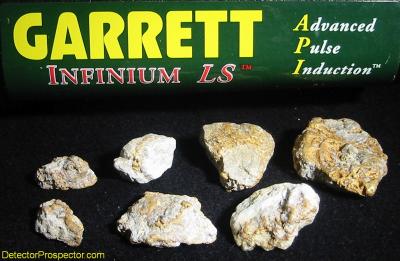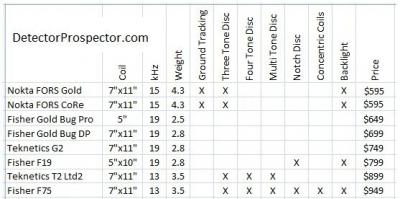Leaderboard
Popular Content
Showing content with the highest reputation on 07/12/2017 in all areas
-
Quality metal detectors have been around long enough that it isn't easy to find virgin ground, no matter what the target goal (coins, relics, nuggets, even jewelry). As previously mentioned, I got hooked on coin collecting when I was in 1st grade thanks to the influence of my mom and two of her brothers. I found my first coin with a metal detector the summer before my senior year in high school (1970). After school and three years in a good job, in 1979 I sprung for a Garrett Groundhog, thinking I would use it to make a nice profit hunting coins and nuggets the way Charles Garrett and Roy Lagal described it in their books.... Then life (many other interests) got in the way. Fast forward 36 (now 38) years when I was again bitten with the MD bug. A lot happened in the treasure hunting world in those 36 years. Detectors got a lot better, and the hobby (or even 'profession' for some) had blossomed. The low hanging fruit had been picked. There is still plenty of treasure in the ground, but most is not very close to the surface and/or severely masked by junk metal, meaning it's going to take new equipment and techniques and/or a disproportionate amount of digging to find the good stuff. But as always, there are exceptions. I mentioned in a recent thread last week that I had stumbled upon a lot where an old home had recently been razed, and it appears that the city now owns it with the intent of appending the land to an adjacent park. It's like stepping back in time -- a time when the detectors were few and primitive. And on my journey on this time machine I was allowed to bring along a Fisher F75! I felt like Cinderella at the ball. My previous post reported that in 3 1/2 hours on Independence Day I found two silver coins along with five Wheat cents, using three detectors to sample the ground. This past Saturday I stayed the entire time with the 5 inch DD on the F75, FA (fast) process, gain of 70, zero discrimination, 4H tones. I had twice as much time to hunt and I only stopped to get water and food which I brought along in the car. I again dug two silver coins (dimes -- see photo below) but this time 34 coppers, NO zinc, and only two clad (dimes). Earlier my Wheat to copper ratio was 50%. If that held up I'd have 17 Wheaties. I could only hope. Arriving home and soaking them, I was amazed to see 27 reverses with Wheat stalks. You'd have thought I spent the day on a combine in Kansas. Four Wheats per hour. Will I ever again experience such a high recovery rate? To emphasize, I hunted two rectangles in those seven hours, one along the city sidewalk, about 6 ft X 60 ft. The other was of similar area along one side of the now missing house. I wasn't finding 'spills'. One hole had three coppers and another had two nearly touching Memorials, but all others were single finds. The most enlightening thing to me is the depth of the coins. All but one (in that group of three coppers) were 4 inches or less. The Barber dime was in the 3 1/2 --> 4 inch depth range. The Merc was 1 inch deep! I don't think the ground where I found the Merc had been distrurbed or reworked recently. The sod looked typical of the area. Is this what it was like back in the late 80's and 90's? Many of you should remember. I returned the next day for another 5 hours but the glass slipper had fallen off and the coach had reverted to a pumpkin. I'll give a followup post on that hunt plus next weekend's planned return hunts. There has to be more there, but now I've harvested the low hanging fruit and what's left appears to be seriously masked with iron nails from the missing house.5 points
-
4 points
-
Well, the final, part three of my videos on the Gold Monster 1000 are complete and up loaded. In this one I am giving hints and tips on how to get the best performance out of the GM1000. I focus on the types of places that the GM1000 will perform best and some suggestions to prospectors on how to increase your chances to find gold. You can see its a funny opening still picture - I'm going to have to change that frame. It makes me look like I'm doing some kind of Zieg Heil maneuver. Actually, I am explaining how if you dont overlap swings, you may miss gold - I have no idea why this was selected by Youtube (done automatically), but I am sure you can change it. Doing these videos has been an educational experience and I will be doing more in the coming weeks.2 points
-
I was out and about with my F75 LTD Sunday morning and found this ring. I thought at first it was junk but closer inspection revealed that it is marked " Sterling Shank" with a jeweler's mark. I had never found a ring mark Sterling Shank before so I had to research it. The band is silver and the stone mounting is silver plated. Its not a continuous band either. Its cut out at the top and the stone mounting is dropped in the notch and soldered in place. That would explain the zinc VDI reading it gave me. Researching the jeweler's mark, This ring has the ,the 1947 Vargas mark on it. Somebody lost one of grandma's rings. Link to a site where you can research jeweler marks. http://illusionjewels.com/costumejewelrymarksv.html I'm calling it treasure. HH Mike2 points
-
I have been bouncing back and forth between the White's DFX and V3i for many years. In theory the switch to V3i should be a no-brainer. However, the original Vision model I got had bad EMI issues in Anchorage, Alaska, especially with buried power lines. When the V3i came out I tried again with no joy. When I moved to Reno I tried again, and EMI was less a problem. The next issue is the main reason I have a DFX is to run a BigFoot coil. Most coils need to be tuned for the specific detector operating frequency. The BigFoot is tuned for 3 kHz and 15 kHz especially for the MXT/DFX series. My BigFoot works well enough in V3i 2.5 kHz and 7.5 kHz single frequency modes. However, in 22.5 kHz single frequency mode or in three frequency mode the target id (VDI) numbers all skew very high (they tripled on the last V3i that I had). This more or less limited the BigFoot to being used only in 7.5 kHz mode on the V3i where I would generally prefer to use 22.5 kHz single frequency mode. The coil runs just fine on the DFX in 15 kHz mode so after lots of back and forth I finally settled on the DFX. The DFX has weaknesses however. The DFX always transmits a combined dual frequency waveform. When single frequency mode is chosen, the machine still transmits the same waveform optimized for dual frequency use, but simply ignores half the return signal to process either the 3 kHz portion or the 15 kHz portion. The transmit waveform is not optimized for single frequency and so some punch is lost compared to a dedicated single frequency machine like the MXT. The V3i in single frequency mode actually modifies the transmit waveform for use at the single frequency. It is still not quite as efficient as a dedicated single frequency detector, but a big improvement over the DFX way of doing things. The V3i also adds transmit boost capability, that can bring that last little bit of lost performance as compared to a dedicated single frequency detector. The lost efficiency shows up more as shorter battery life than actual lost performance. Second, the DFX while in multi frequency mode is always locked into "Salt Mode" for saltwater beach operation, effectively tuning out the salt range. This unfortunately means that small gold capability is degraded in DFX dual frequency mode. The V3i allows the salt mode operation to be deactivated while in multi frequency mode, allowing for better small gold performance while in MF mode. The closest the DFX can get is to run in a single frequency mode, which turns off the dual frequency salt compensation. But now you are back to running a less optimized single frequency mode as compared to the V3i in single frequency mode. Long story short there are too many benefits and neat features on the V3i that I have been denying myself due to my desire for BigFoot compatibility. The fact is I normally run the BigFoot in 15 kHz single frequency mode on my DFX for a little extra gold hots. However, after some thought I have decided the V3i running at an optimized 7.5 kHz is likely just as good if not better than the DFX running a "soft" 15 kHz. So I did talk myself into a new V3i recently. In theory the V3i at 22.5 kHz should be a decent nugget detector, but you rarely hear of it being used as such. Part of that is a ground balance issue. The DFX and V3i tracking systems really are not up to working that well in heavily mineralized ground. The DFX does offer a normal manual ground balance mode with both a coarse and fine adjust, although you have to dive into the menu to access it - not so handy for making constant tweaks. The V3i actually has no true Manual ground balance mode. The best you can do is track and lock, as on the MXT. However, the V3i "Live Controls" can be set up to give the operator direct access to a ground balance offset that can tweak the "locked" setting up or down. That may actually be easier to access and use than the DFX version of manual ground balance but I need to play around more to find out for sure. White's DFX and White's V3i metal detectors2 points
-
2 points
-
2 points
-
It does sound off on various hot rocks, volcanic hot rocks and larger bits of magnetite (which are the worst of the hot rocks at the place you mentioned). Like a normal VLF, you deal with that by turning down the gain, or in a worst case, switching to discriminate mode. It is a excellent VLF, well designed and easy to operate, but it is still subject to the advantages and disadvantages of the VLF technology.2 points
-
my solution is a five gallon bucket, snap on toilet seat, quality plastic bags and Kitty Litter. I have used this method for years. The waste can be bagged and tied and hauled out. This is no different than cleaning up dog or cat poop or crappy diapers. The system is not meant for women that pee five gallons a day...sorry ladies, there are advantages to being a male person. fred2 points
-
I run in auto a lot and when doing so I just leave it there with no ill effects, but switching to Manual 10 might give you a sharper signal for pinpointing small nuggets.2 points
-
Hi guys I have a question regarding the Gold Monster and how the sensitivity should be set while on the ground during target retrieval .In Jonathan Porters article on mastering the GM he states that it should be set to the level that the target was first identified .As i use auto or auto+ does that mean the detector is left at this setting or switched to a manual setting whilst sitting the detector down before digging and pinpointing. I have used the monster for about a month now and except for the issue with the loosening shaft connections (i now use a 1 inch broomstick permanently) and some noise when bumping the coil, i have found this detector a pleasure to use on the central western goldfields of eastern oz and managed to find a 2 gram piece on my second day within 2 inches of a of a boot rivet down about 4 inches.2 points
-
Fred, Don't be afraid of your detector. It is not your computer ... or at least not totally like it. Here is an old bit about early computers that could have given you that trepidation: For all of us who feel only the deepest love and affection for the way computers have enhanced our lives, read on. At a recent computer expo (COMDEX), Bill Gates reportedly compared the computer industry with the auto industry and stated, 'If Ford had kept up with technology like the computer industry has, we would all be driving $25 cars that got 1,000 miles to the gallon.' In response to Bill's comments, Ford issued a press release stating: If Ford had developed technology like Microsoft, we would all be driving cars with the following characteristics (and I just love this part): 1. For no reason whatsoever, your car would crash.........Twice a day. 2. Every time they repainted the lines in the road, you would have to buy a new car. 3. Occasionally your car would die on the freeway for no reason. You would have to pull to the side of the road, close all of the windows, shut off the car, restart it, and reopen the windows before you could continue. For some reason you would simply accept this. 4. Occasionally, executing a maneuver such as a left turn would cause your car to shut down and refuse to restart, in which case you would have to reinstall the engine. 5. Macintosh would make a car that was powered by the sun, was reliable, five times as fast and twice as easy to drive - but would run on only five percent of the roads. 6. The oil, water temperature, and alternator warning lights would all be replaced by a single 'This Car Has Performed An Illegal Operation' warning light. 7. The airbag system would ask 'Are you sure?' before deploying. 8. Occasionally, for no reason whatsoever, your car would lock you out and refuse to let you in until you simultaneously lifted the door handle, turned the key and grabbed hold of the radio antenna. 9. Every time a new car was introduced car buyers would have to learn how to drive all over again because none of the controls would operate in the same manner as the old car. 10. You'd have to press the 'Start' button to turn the engine off. PS - I 'd like to add that when all else fails, you could call 'customer service' in some foreign country and be instructed in some foreign language how to fix your car yourself!!!!2 points
-
We have some detectors that have a battery pack that has to be charged in the unit and others that can be removed. The only thing I dislike about the batteries that can't be removed is when this happens you don't have a working detector anymore. I know most have a long charge life but all have a limit on how long that will last. Now give me a detector that a battery pack that can be removed to be charged and have a pack you can drop in to keep detecting is in my opinion is the best way to go. I'm sure everyone has their opinion and I'd like to hear yours. Chuck PS At this time I have just one Scuba Tector that batteries can't be removed1 point
-
The old MXT was of course just tracking or "track and lock". The addition of the ground grab button on later MXTs was a nice usability enhancement but really does the same thing in the end.1 point
-
That's correct John. I think we are thinking same thing and tripping over terminology. The F75, GBP, etc. track internally and display the current tracking as the ground phase number. This is only displayed however and is not engaged or used until locked in via the ground grab button.1 point
-
No, that is ground grab. Manual ground balance has the ability to adjust up or down via a control. There are three basic methods: GMT - Ground tracking OR ground grab OR manual ground balance MXT - Ground tracking OR ground grab V3i - Ground tracking OR ground grab With automatic tracking a detector adjusts to the ground on the fly. Ground grab is accomplished via either the "track and lock method" or via a "Ground Grab" button. Tracking and then locking simply sets the balance at the last tracked setting. Ground grab usually relies on a detector tracking internally and then "grabbing" whatever that internally tracked number is and locking it into place via a button or switch. Machines like the F75 and Gold Bug Pro, to name a couple, do track internally at all times, which is where the ground phase display comes from. Hitting the ground grab button on either unit locks the current tracked number in as the current fixed ground balance setting. Other machines ground grab by temporarily engaging a tracking circuit when a button or switch is activated. Manual ground balance is pure manual control. Classic example is the Gold Bug 2 ground balance (ground reject) knob.1 point
-
No in effect what you are doing is up dating the GB to the current location, Machines like the F-75 don't really have tracking and they basically are like running these 3 machines in the locked position, but with a few of FT machines your only option is to update the tracking although they monitor the ground conditions they do not actually Track the ground by self adjusting like the DFX, V3i and the MXT's do. where they can self adjust In the ground mode or monitor the ground when in the Locked position and they will update at the press of the Grab button. John.1 point
-
1 point
-
Lithium-ion packs for all my Whites detectors. Easily removed for charging. Bumping the TDI SL pack to a 4-cell really wakes up that machine. 16.8v instead of 12v. Doing that with my other Whites units would damage them, however, so run a 3-cell Li-ion in the GMT and DFX. Found a charger that lets me set the output voltage and current, so I can use the same charger with both packs. But, I need an extra pack for the SL....it only gets about 5 hours on a single charge. I plan on building another this winter. Jim1 point
-
1 point
-
In Feb 1966 the Australian dollar(changed from Pound Shilling and pence) was effectively pegged to the British pound at an equivalent value of approximately 1 gram of gold. The highest valuation of the Australian dollar relative to the U.S. dollar was during the period of the peg to the U.S. dollar. On 9 September 1973, the peg was adjusted to USA $1.4875 It is now Floating or is that Sinking at US$1.4875 it is now USA $0.7647 and got below USA $0.61 in Aug 1986. As an Aussy a match between Gold Price and Currency has to be balanced to get the right return for our gold. Below are some key Gold events In August 1971, USA took the dollar off the gold standard.= one Troy ounce of gold at $35. In August 1972, USA devalued dollar to $38 per ounce of gold. In March 1973, Most of the major countries adopted a floating exchange rate system. Then in May 1973, the USA devalued dollar again, to $42.22 per ounce. January 1980. Gold hits record high at $850 per ounce. High inflation, strong oil prices, Afghanistan caused investors to move into the metal. In August 1999, gold fell to $251.70 central banks reducing gold bullion reserves In October 1999, gold reached a two-year high at $338 after 15 European central banks to limit the gold sales. Then in December 2003 to January 2004, gold broke above $400, due to conflict with Iraq. In November 2005, the spot gold rises hit $502.97 . April 2006 and gold prices 600 US dollars an ounce, the highest since December 1980 May 2006, gold prices peak at 730 US dollars an ounce This was due to firm oil prices and political tensions over Iran's nuclear ambitions. June 2006 gold falls 26 percent to $543 from its 26-year peak after investors and speculators went on a flurry of profit taking. Nov 2007 spot gold peaks at a 28-year high of $845.40 an ounce. Jan 2008, gold has breached 900 dollars an ounce and looks set to reach the magical 1000 US dollars per ounce. July 2017(today) Gold is AUD $1594 or USD $1219 .1 point
-
1 point
-
I can hang it and bang it..you can tape it...and keep the turnips for yourself! fred1 point
-
1 point
-
Well, check those switches on the Black Widows first! However, this is a known issue with other Minelab detectors. Headphones do need to be wired properly in order to work with some models. This Minelab Knowledge Base article goes over the issue as relates to the CTX 3030. I believe the GPZ 7000 is identical in this regard. Sun Ray makes two models of Sun Ray Pro Gold headphones, the original model, and another model wired specifically to work correctly with the CTX 3030 (and other detectors also) for $5.00 more. Why not just make the one model that works with all detectors? Good question. Long story short I own two sets of the Sun Ray CTX version and they work with anything. I would tend to doubt this is the problem on the GM 1000 but figured I would mention this just in case. Click on images below for larger versions....1 point
-
What the article is not telling is" the rest of the story" and that is the gross price manipulations that make normal price discovery meaningless. But on the bright side, If the price of gold was allowed to rise to where every one knows it should be than I wouldn't be hear enlightening all of you with my fynanshial wizdumb. I would, instead, be out prospecting.1 point
-
Heard of people using lead pencil. I've tried it and doesn't seem to hurt the coin? Nice job on the coins Cabin...always love seeing your photos...I'll try the eraser1 point
-
bought a 15 dd off Stinky Pete for my 3500 , only used it twice; no gold; but depth on tiny lead is awesome, recently upgrade to a 4000 and it came with the elliptical mono must be around 15 x 8 and its dynamite on small lead at good depth ; again no gold but only used it twice , didn't try the 15, was so impressed layed up at the moment with a mini hip replacement,but took 8 weeks off work so when good to go will hit the Castlemaine area for a couple of weeks and hopefully have some pics to share1 point
-
1 point
-
1 point
-
1 point
-
1 point
-
1 point
-
Glad you liked it - I'm going to do more on metal detectors but I am also planning to do a set on treating hard rock ore all the way from rock to gold button.1 point
-
Train tokens, etc., etc.. Bet there's some merchant rounds to be found.. Wouldn't doubt smaller denomination gold coinage either.. Follow track side / bed / whatever's left a ways too.. Old camps now overgrown just out-of-town.. Swamp1 point
-
1 point
-
So, did they leave them in LA or did they loose them along the way? Don't matter it is still a huge pain in the Buttocks! As to oz-speak...just remember that "time for tea" means someone is going to feed you food...which is way better than a beverage. Good luck to you both! fred1 point
-
Hi. Steve. Yes it's interesting how these machines excel at some things and not others. the one thing I have found with the T2 is that it is a way better machine in All Metal Mode than Discrim. In Discrim. Mode it does not like our $1 gold coin. I buried a 5...10...20...50 cent and a $1 coin.The 5 cent is quite small and was still picked up reasonably well. But the big chunky $1?. Could not hear it or sometimes one way but not the return sweep.But in All Metal.? Everything was in your face big time even with the coil off the ground several inches. I also noticed big differences in the multi tone programs. people need to be aware that in some of these programs a target that sounded in one may not sound at all in another. I assume it is to do with the way the filtering has been set up. I found you really need to practice with some known targets to find out exactly what is happening in the discrim. programs and what targets you may not hear in some of them. Personally I will always detect in AM unless in very rubbishy areas. The T2 is very powerful in this mode.The Video by the way was one continuous shot so I don't think there were any edits. Each person switched his machine on and GBd it and swept the target. It was to my eyes a pretty convincing and fair comparison, but I agree with what you're saying. Some of em are a bit dodgy. Anyway Steve It's always a pleasure to talk with you as your advice is always on the money and you are a credit to the Detecting community....Regards...Ronnie.1 point
-
OK, lets narrow this down a bit. Again, I put all these detectors together because they are so very much alike. They are all made by First Texas, except the two Nokta units. Other detectors not being discussed here does not reflect on them in any way other than that they are not as similar as all these. All the detectors on this list feature ground grab, manual ground balance, full time visual display indicator (VDI) number, all metal mode plus mono and dual tone disc modes. These are standard features on most VLF detectors used for general purposes to include prospecting. The table displays features that are not common to all the units. The prices are discounted prices as found on the internet on 7/25/2015 and are subject to change at later dates. Ground Grab - The ability to ground balance a unit by pushing a button, raising and lowering it over the ground a couple times, and releasing button. Sometimes referred to as push button ground balance or automatic ground balance. Manual Ground Balance - The ability to manually adjust the ground balance setting up or down, in conjunction with or separately from the Ground Grab function. Ground Tracking - The detector continuously monitors and automatically adjusts in an attempt to keep an optimum ground balance setting at all times. This can be a very valuable function on extremely variable ground and large cobble piles. It can impede the detection of very weak signals and so needs to have the ability to be disabled. Some detectors are always set to ground track - this is not desirable and does not include any detector on this list. Full Time Visual Display Indicator (VDI) Number - The unit has a LCD display that puts a number on screen whenever the detector thinks it has enough information to give a probable target id. This function is available in all modes on all these detectors, including the all metal mode. Many detectors disable this function while in all metal mode. All Metal Mode - This is a true unfiltered threshold based all metal mode. Beware of detectors that have a discrimination mode set to accept all items and calling that an all metal mode. That is more properly called a "zero discriminate mode" because it is still a filtered discrimination mode with reduced sensitivity and depth of detection. Almost any detector with a true threshold based all metal mode will also have a threshold control and a ground balance control. If these functions are lacking be cautious. Mono Discriminate Mode - The ability to use a discrimination control such that all items below a certain setting are rejected or ignored. All items above the setting give an audio indication. This may employ VCO (Voltage Controlled Oscillator) audio which increases the pitch and volume of the audio as the target strength increases. Dual Tone Discriminate Mode - Ferrous (steel and iron) items produce a low tone, non-ferrous items produce a higher tone. The point where the tone shift occurs may or may not be adjustable. Three Tone Discriminate Mode - A third tone is produced by high conductive targets that usually identify most US coinage, with the possible exception of US nickels, which are a medium conductive target. A typical three tone scheme has a low tone for ferrous targets, a medium tone for medium conductive target that includes most gold items (but also lead and aluminum) and US nickels, and a high tone for clad, copper, and silver coins. However, some detectors like the Fisher F75 offer a modified version that shifts nickels into the high tone range. Four Tone Discriminate Mode - The medium tone in the three tone scheme above is split in half with a low mid tone and a high mid tone. The high mid tone range usually includes zinc pennies, aluminum screw caps and square tabs, but also can include many older coins like Indian Head pennies, Flying Eagle Cents, Three Cent silvers, and $5 gold coins plus very deep and on edge coins. The low mid tone range is the "sweet spot" for valuable gold and platinum jewelry. Multi Tone Disc - This ties the tones produced to the target id numbers. The higher the number, the higher the tone. It can produce information overload for new operators but can be a valuable tool for professionals working in modern trash. Notch Disc - This allows a certain VDI range to be selectively rejected. For instance, if at a ballpark a certain type of aluminum pull tab was found to be very prevalent, the signal from just that pull tab could be rejected while everything else was accepted. In a nugget hunting scenario, if an area was littered with thousands of .22 shell casings, the signal from just the casings could be eliminated. However, in either case a gold item that read identical to the pull tab or .22 shells casing would also be lost. This might be an acceptable trade, especially when nugget hunting if you know the general nature of the gold in the area. Concentric Coils - There has been a huge movement towards the use of DD coils these days and a sort of mythology has sprung up that they are better in all cases. However, one only need look to the Fisher Gold Bug 2, which only employs concentric coils, to know this is not true. Concentric coils are like mono coils on a PI detector and when conditions allow (milder ground) will go deeper than the identical size DD coil. The sharp edge knife blade depiction of a DD coil search field is also a marketing myth. If you do not believe that, simply set your detector up and run a dime around under the coil to get an idea of where and how it responds. A round concentric coil produces a field like a soccer ball cut in half. A DD coil produces a field more like a football cut of half lengthwise. DD coils handle bad ground better but concentric coils tend to have better ability to separate ferrous and non-ferrous items. DD coils have great difficulty with bottle caps where concentric coils tend to easily identify them as ferrous targets. The ability to employ concentric coils is getting rare these days but can be a secret weapon in some circumstances. Backlight - The ability to light the LCD screen up for low light conditions.1 point






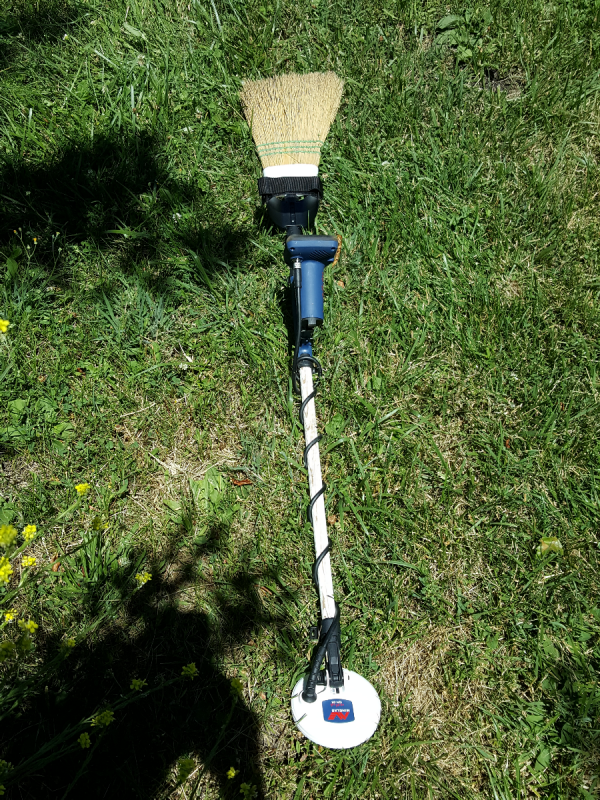
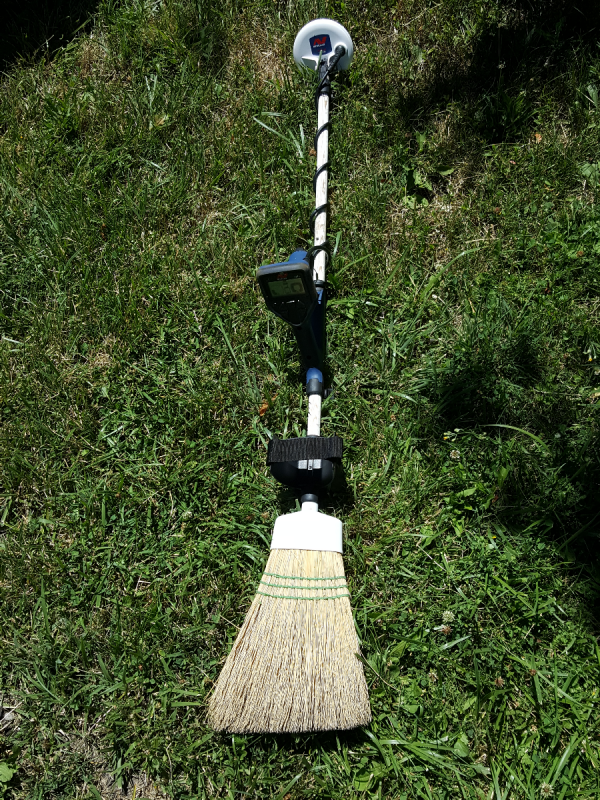
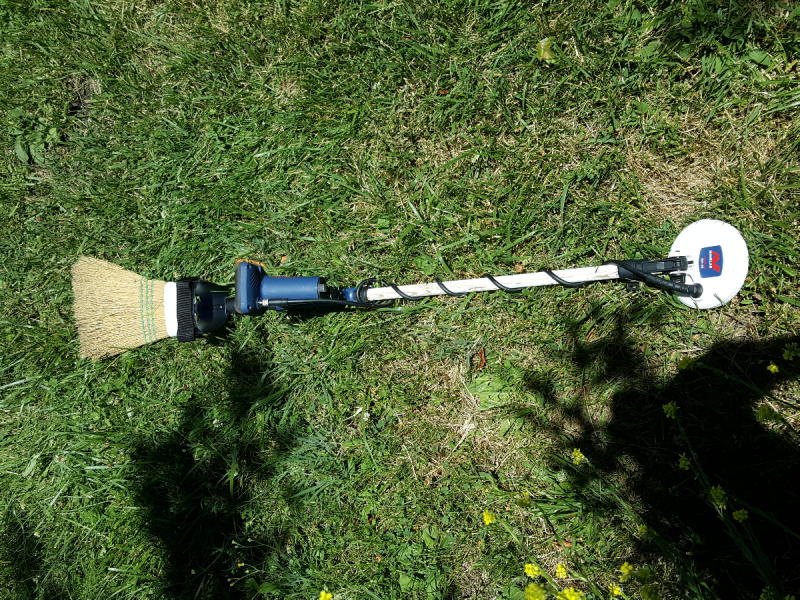
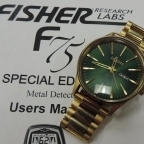
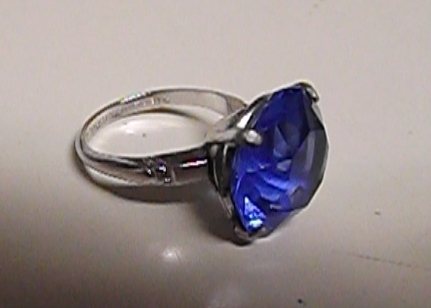
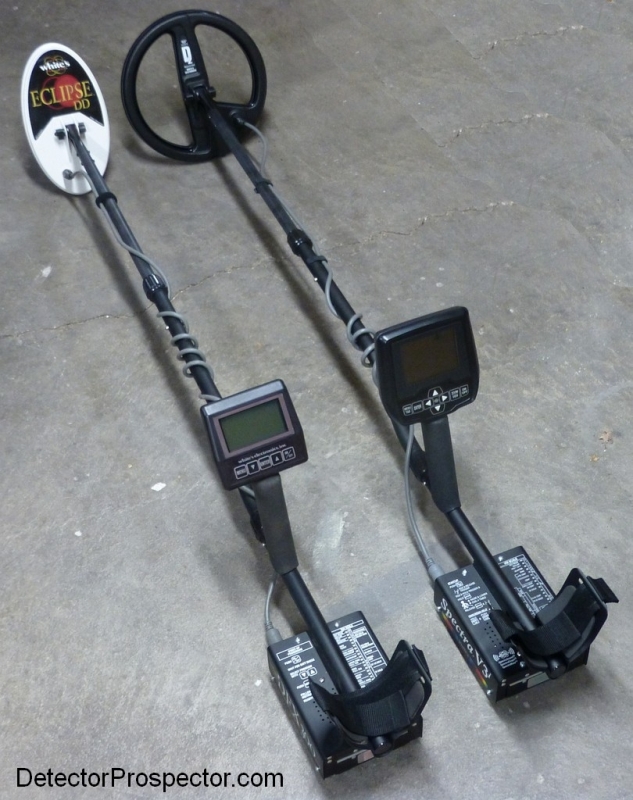

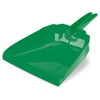

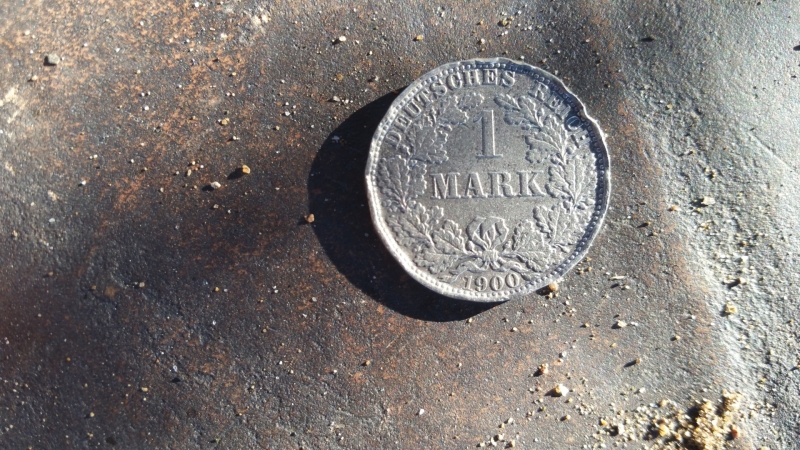
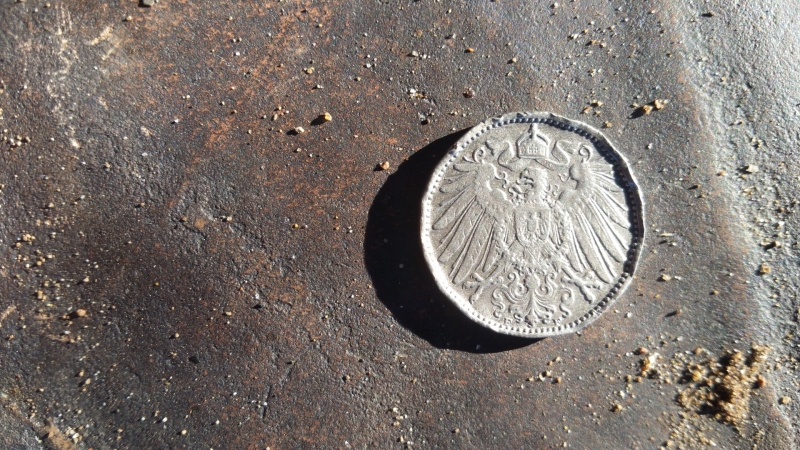



.thumb.jpg.ac5e8ee36e43bcab745dbc623fcf1874.jpg)
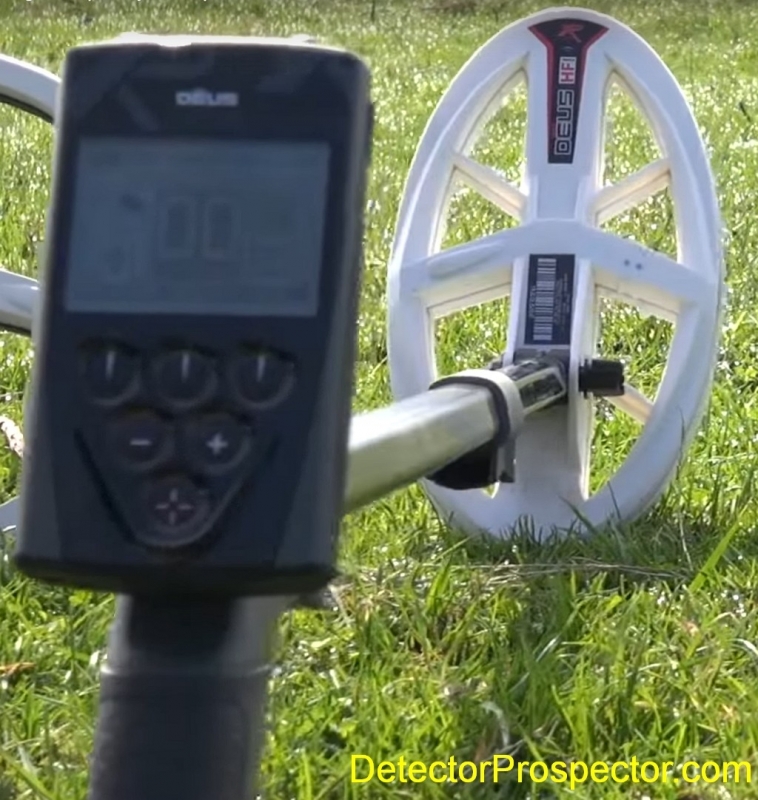


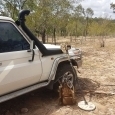
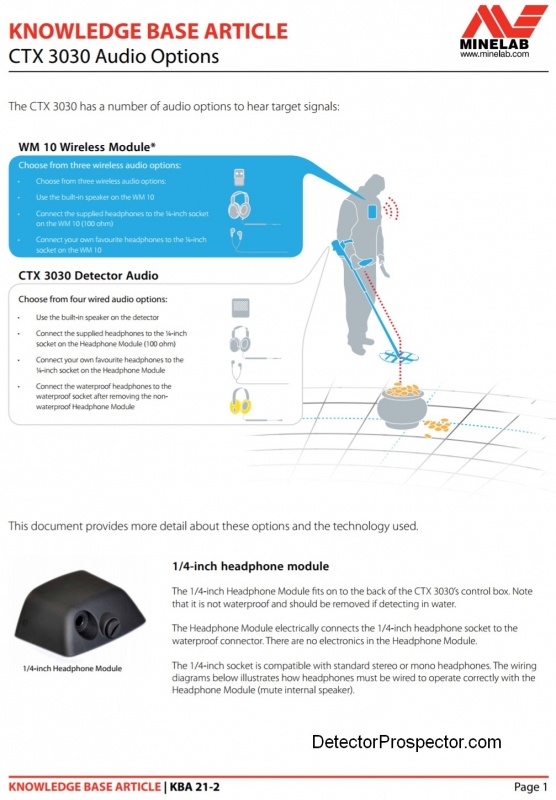
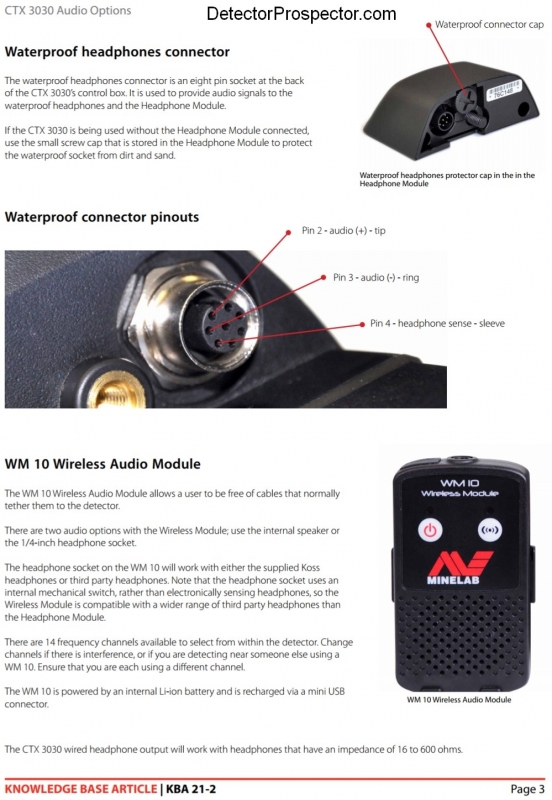
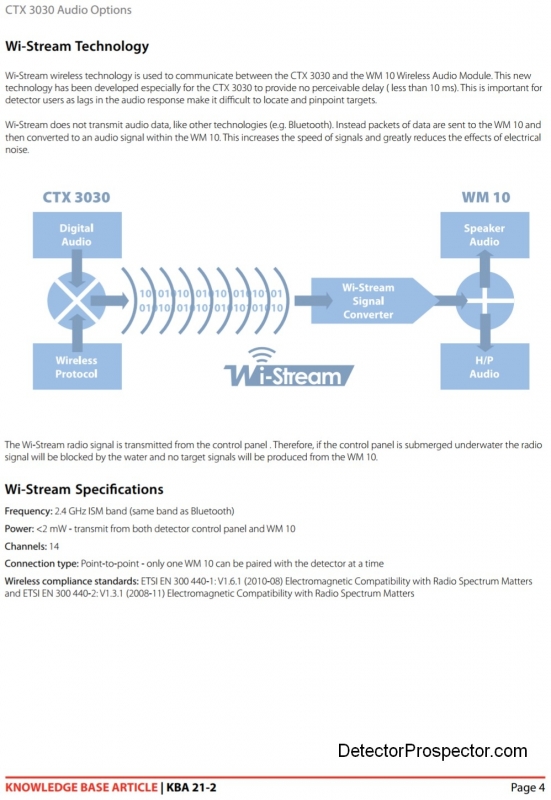



.thumb.jpg.77e4cb5bf39d44bdd2050d2edb7dfdb1.jpg)
